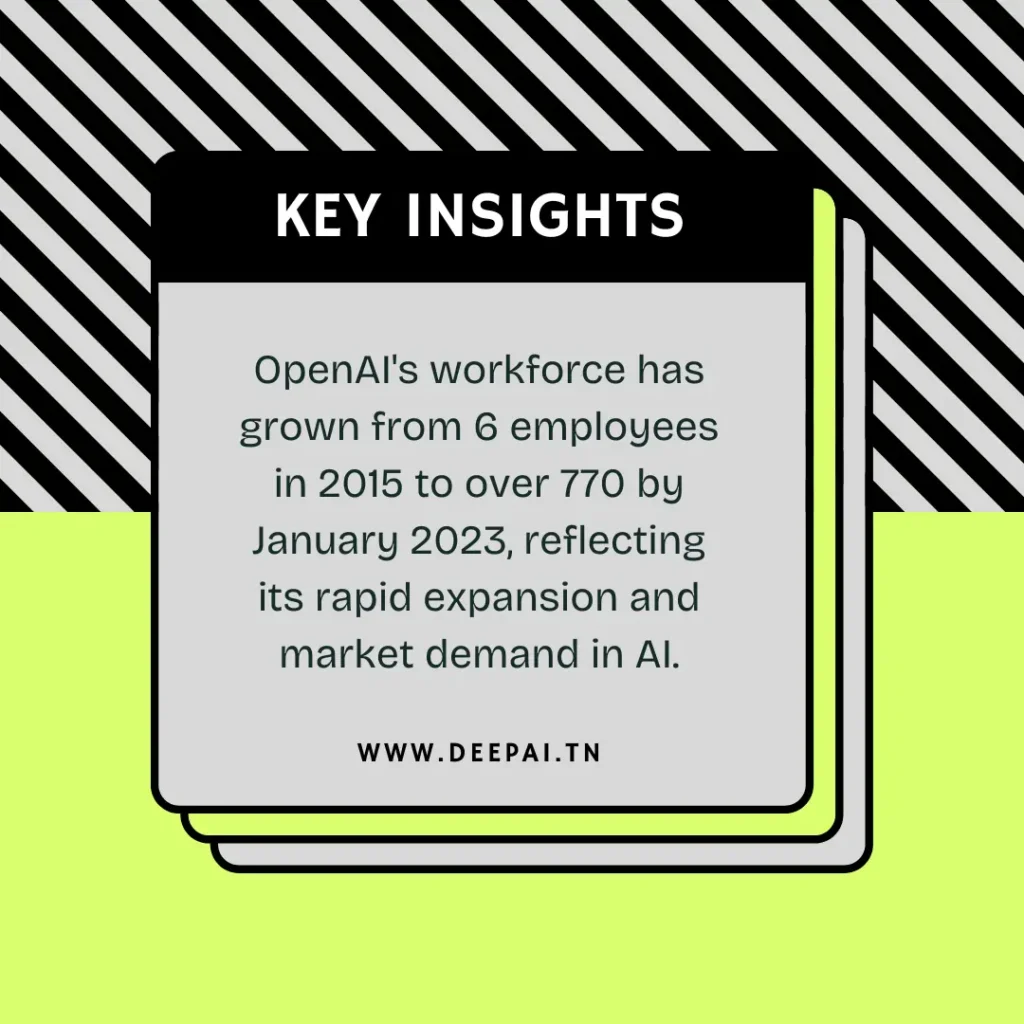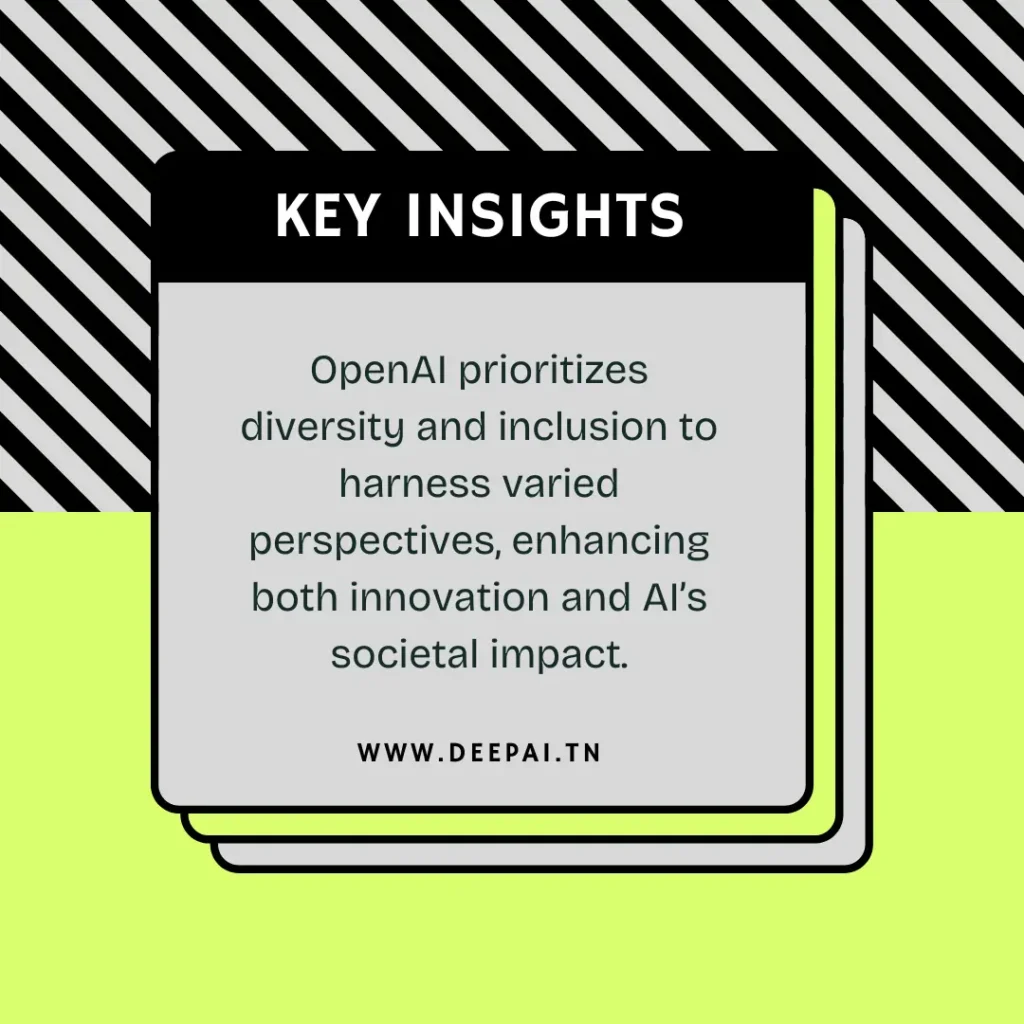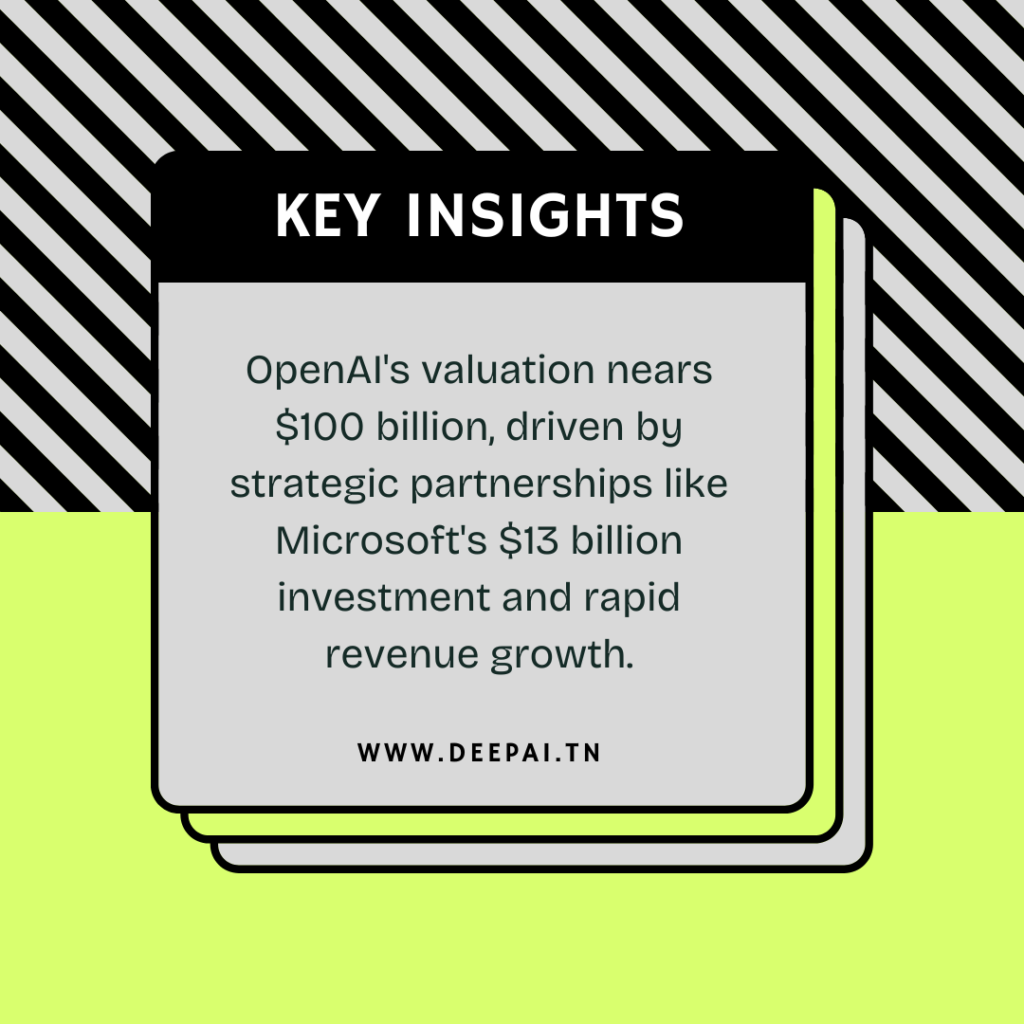OpenAI Number of Employees Statistics: Understanding Workforce Growth and Projections
In the fast-evolving world of artificial intelligence, OpenAI stands as a remarkable beacon of growth, innovation, and ambition. Initially grounded by just six passionate individuals in 2015, the organization has catapulted to a workforce of over 770 by early 2023, with projections suggesting an eye-popping leap to around 1,700 employees by the close of 2024.
This meteoric rise underscores not only the burgeoning demand for AI solutions but also the commitment of OpenAI to become a front-runner in the AI landscape. Each individual’s role within the company contributes to a tapestry of talent weaving together research, development, and ethical considerations. As we delve into the specifics of employee growth, diversity, and strategic initiatives, we unravel how this workforce expansion lays the groundwork for groundbreaking advancements.
Moreover, we will explore the implications of such dynamic growth—both the promise of transformative AI technologies and the necessity of navigating challenges in regulation and ethics. In essence, OpenAI’s journey is a mirror reflecting the rapidly changing face of technology and the human ingenuity driving it forward.
Employee Growth and Workforce Size
- OpenAI employs between 201 to 500 individuals, indicating significant workforce size for AI research.
- OpenAI’s employee count is projected to reach approximately 1,700 by the end of 2024.
- OpenAI employed 375 individuals as of January 2023, according to CEO Sam Altman’s tweet.
- OpenAI employs approximately 770 individuals, showcasing significant growth since its founding in 2015.
- The employee count has increased from 6 in 2015 to over 770 by January 2023.
- OpenAI’s workforce has rapidly expanded, reflecting its ambitious growth and increasing market demand in AI.
- OpenAI’s staffing levels position it competitively within the rapidly evolving artificial intelligence industry landscape.
- OpenAI’s headcount reflects a strategic balance between maintaining talent quality and expanding workforce capabilities.
- The organization employs a diverse workforce, emphasizing various disciplines and backgrounds for AI development.

The explosive growth in OpenAI’s workforce, surging from a mere six employees in 2015 to approximately 770 by January 2023, paints a vivid picture of the organization’s ambition and the surging demand for AI expertise. As projected to reach roughly 1,700 by the end of 2024, this trajectory not only showcases OpenAI’s responsiveness to evolving industry needs but also highlights its strategic focus on nurturing a diverse talent pool across various disciplines. With each new recruit, OpenAI fortifies its competitive edge in the bustling AI landscape, akin to a gardener tending to a vibrant garden, where varied seeds (talents) bloom together, enriching the ecosystem. This dynamic workforce not only underpins innovation but also reflects a commitment to quality and collaboration as the future of artificial intelligence continues to unfold.
Commitment to Diversity and Inclusion
- OpenAI emphasizes diversity, equity, and inclusion within its workforce to capture varied perspectives.
- Leadership actively supports ongoing initiatives aimed at enhancing workplace diversity and inclusion at OpenAI.
- The organization values the full spectrum of human experiences to enhance AI’s societal impact.
- OpenAI’s workforce demographics showcase a blend of experienced AI researchers, many drawn from tech giants.
- OpenAI’s workforce demographics highlight a blend of technical and non-technical professionals contributing to innovation.
- OpenAI’s employee equity distribution began after the shift to a capped-profit model, enhancing talent retention.
- OpenAI’s employee count reflects a robust growth trend within the AI research and deployment industry.

Our Interpretation
OpenAI’s commitment to diversity and inclusion is not just a checkbox on a corporate form, but a vibrant tapestry woven into the very fabric of its operational ethos, enhancing the societal impact of AI. With an actively engaged leadership championing diverse initiatives, the organization’s workforce is a harmonious blend of technical brilliance and unique life experiences, all aimed at pushing the boundaries of innovation.
The shift to a capped-profit model has fortified employee equity distribution, which has proven essential for talent retention amidst the rapid growth seen in the AI research and deployment landscape. As OpenAI continues to champion varied perspectives, it not only enriches its innovation but sets a powerful example for the industry, ensuring that the future of AI is inclusive and reflective of a diverse world.
More Insights — Global AI Market Size Stats: Growth Projections, Regional Insights, and Emerging Trends
Strategic Partnerships and Financial Growth
- Microsoft owns nearly 49% of OpenAI, having invested about $13 billion since 2019.
- OpenAI’s revenue was estimated at $28 million in 2022, with projections of $1 billion by 2024.
- OpenAI has received over $12 billion in funding, reflecting strong investor confidence in its mission.
- OpenAI’s valuation has reached nearly $100 billion, positioning it as a leader in AI innovation.
- The company has transitioned from non-profit to capped-profit model to attract top-tier AI talent.
- Revenue growth of 700% in 2023 highlights OpenAI’s successful strategies in capturing market value and investment.
- Effective collaboration among a small team can lead to superior market expansion and operational success.
- OpenAI’s user base reached 180.5 million, showcasing its widespread adoption globally.

Our Interpretation
The remarkable synergy between Microsoft and OpenAI exemplifies how strategic partnerships can catapult financial growth and innovation; with Microsoft’s commanding stake, a $13 billion investment, and OpenAI’s soaring revenues—from a modest $28 million in 2022 to a projected $1 billion by 2024—this collaboration has undeniably paid dividends.
OpenAI’s meteoric rise in valuation to nearly $100 billion further solidifies its status as an AI pioneer, and the striking 700% revenue increase in 2023 underlines the efficacy of its strategic direction and vision. By transitioning to a capped-profit model, OpenAI not only attracts elite talent but also enhances its market presence, as evidenced by its expanding user base of 180.5 million, indicating robust global demand. This equilibrium of innovation and financial acumen signals a promising trajectory for both entities, demonstrating that thoughtful collaboration is the seed from which considerable growth can blossom.
Technological Impact and Product Development
- OpenAI has been pivotal in the AI boom, particularly with the launch of ChatGPT.
- ChatGPT achieved 1 million subscribers within just 5 days of its launch, indicating massive demand.
- The launch of GPT-4 and other models has positioned OpenAI as a leader in generative AI.
- OpenAI’s innovations have prompted competitors like Google to accelerate their AI development initiatives.
- OpenAI Codex supports over 12 programming languages, demonstrating versatility and appeal to developers.
- Over 3 million active developers are utilizing DALL-E, showcasing its impact on the developer community.
- OpenAI employs a diverse workforce, with many top researchers leaving for competitor firms.
- OpenAI’s products, including GPT-3 and DALL-E, have significantly influenced the AI research and development landscape.
Our Interpretation
The meteoric rise of OpenAI, exemplified by ChatGPT’s staggering achievement of 1 million subscribers in just five days, underscores a paradigm shift in technological demand and innovation. It is akin to a digital gold rush, where OpenAI not only catalyzed its own success with the launch of GPT-4 and DALL-E but also ignited rival firms like Google to hasten their AI initiatives, creating a competitive landscape bursting with creativity and urgency.
OpenAI’s tools, designed to appeal to a diverse developer audience—more than 3 million active users of DALL-E alone—reflect a robust interrelation between technology and talent. However, the exodus of top researchers to competitors poses both a challenge and an opportunity in the race toward sustainable innovation in AI, suggesting a dynamic and constantly evolving ecosystem that will continue to reshape the future of product development.
Challenges and Regulatory Landscape
- In 2023, OpenAI faced significant legal challenges, including multiple lawsuits regarding copyright infringement issues.
- The company’s growth trajectory indicates a strong future in AI, driven by innovative research and development.
- OpenAI’s board restructuring in late 2023 reflects ongoing internal challenges and leadership controversies.
- ChatGPT is banned in 7 countries due to data safety concerns, highlighting regulatory challenges.
- Rapid growth in staffing levels can lead to confusion and inefficiency within larger teams.
- The nonprofit governance of OpenAI distinguishes it from traditional tech companies, focusing on societal impact.
- OpenAI’s focus on talent density suggests a strategic approach to hiring and workforce management.
- Smaller teams can outperform larger organizations, showcasing the importance of talent density and efficiency.
Our Interpretation
The challenges and regulatory landscape that OpenAI navigates in 2023 demonstrate a balancing act between innovation and compliance, much like a tightrope walker poised for a leap.
While facing legal hurdles, including copyright infringement lawsuits, and a ban in seven countries over data safety issues, OpenAI’s commitment to societal impact through its nonprofit governance highlights a unique mission. The restructuring of its board amid internal conflicts signals a need for clearer vision and leadership, essential for maintaining momentum as staffing grows.
As the company emphasizes talent density, it reveals a savvy strategy that suggests smaller, focused teams can consistently outperform larger, unwieldy organizations. This pursuit of efficiency amidst regulatory scrutiny not only paints a portrait of resilience but also foreshadows a future where OpenAI might emerge as a beacon of responsible innovation in the AI landscape.